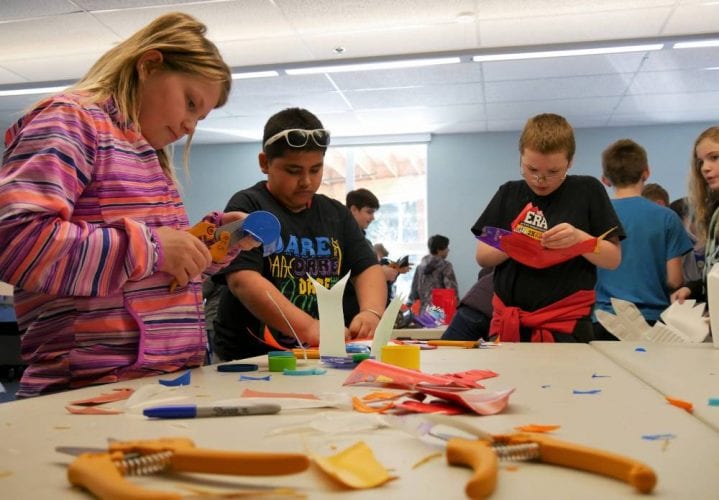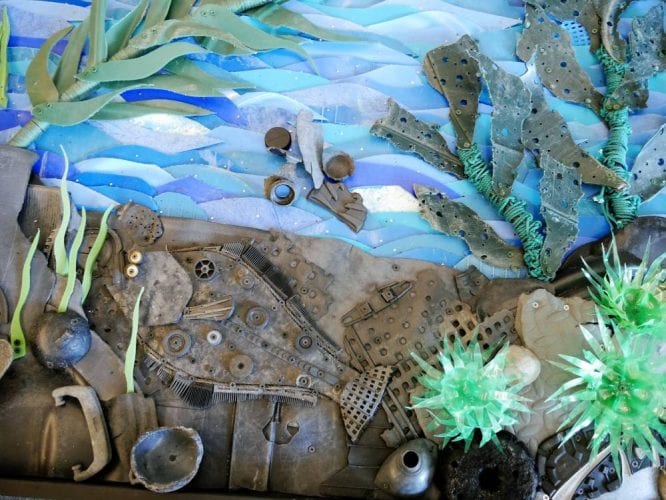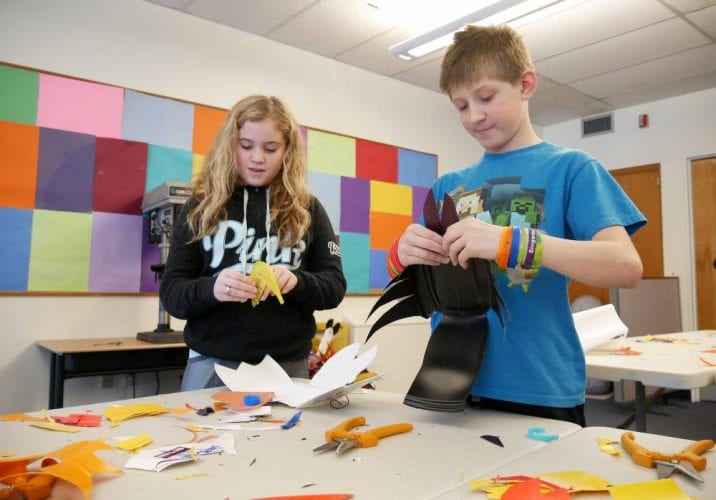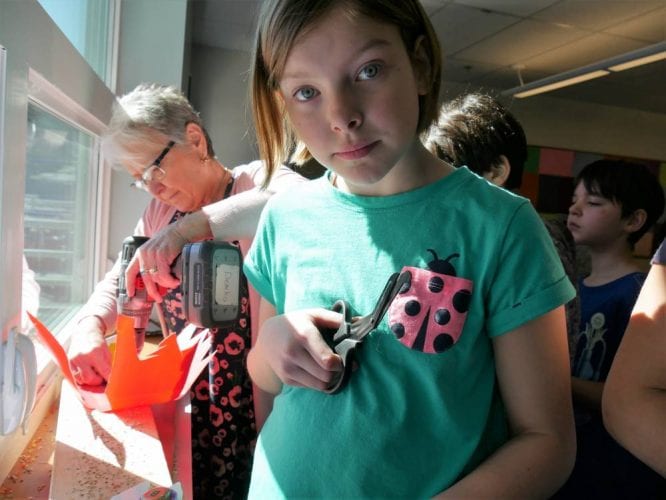
In Petersburg, a visiting artist is turning plastic pollution into art at the Rae C. Stedman Elementary School. As KFSK’s Angela Denning reports, the student art exercises are designed to educate kids on the true costs of plastics on our planet.
A group of Petersburg second graders are sitting in a circle and inside the circle is a round metal tub. It’s filled with water and thousands of tiny colorful specks.
“This is all plastic that I picked up off the beach when I was in Hawaii,” said Elizabeth Roberts, an artist visiting the school for a few weeks.
“What?!” exclaimed a student.
You almost have to see it to believe it.
Before her plastics haul in the tropics, Roberts, who is based in Oregon, spent five weeks as a volunteer cleaning up marine debris on Tugidak, a small island near Kodiak. Her group collected 80,000 pounds of trash.
Some of that is in a box, which she dumps out onto the floor.
“Everything in this box came off a beach,” she said.
The kids immediately start sifting through the pile of trash and recognize several items.
“And what was, I thought, going to be this really fun summer adventure pretty much turned into this life changing experience because I was picking up things that I recognized and that I used in my daily life,” Roberts said.
That was six years ago. Since then Roberts has done other cleanup projects and has been making art out of the trash.

It’s a global problem and a human-made one.
Since the 1950s plastics have been a part of daily life. It’s cheap to produce and easy to sculpt. Industry was quick to embrace this wonder material. American consumers were sold on its utility. Industry groups continue to promote plastics with the initiative, Plastics Make It Possible.
But there’s another side.
More than eight million metric tons of plastic enters the ocean every year. At least five enormous plastic islands have formed. In the Pacific, one bigger than Texas is floating between Hawaii and California.
“As an artist, using that medium is a really powerful way to reach people because it really doesn’t matter what language you speak, we can all look at art and really understand the meaning of it,” Roberts said.
These grade schoolers get it. The students are making their own art out of plastic. They’re at tables, cutting and assembling pieces into large fish.

5th graders Eden Davis and Ethan Bertagnoli work on creating plastic fish from local trash. The sculptures are part of art lessons by visiting artist, Elizabeth Roberts. (Photo by Angela Denning/KFSK)
Heidi Brantuas is making a blue and white flying fish.
“I think it is very good because we are reusing plastic that would’ve just been thrown away,” she said.
Plastics are cheap upfront but have an ecological cost that’s harder to calculate. 11-year-old Sebastian Contreras understands this.
“It’s endangering species of animals in the water because they eat the plastic and after they eat the plastic we fish for the fish and we eat the fish and then it goes into our bellies,” Contreras said.
Another 5th grader, Sophie Tetrault, digs through a box of bottle tops to find eyes for her fish. She says she understands why plastics are popular.
“It helps our everyday lives be easier but it’s not good for the environment,” Tetrault said.

Natalie Bertagnoli agrees.
“It can make cool stuff but it’s really bad when it gets into the ocean,” she said. “And there’s a lot of it that fish can eat and they can die and all sorts of things like birds can die.”
Roberts is working with every class at the grade school for a few weeks.
One person’s trash is another person’s treasure. That may be cliche but it’s Roberts’ approach to changing people’s perceptions.
———–
Funding for Elizabeth Roberts’ Petersburg residency came from:
Partners in Education, Petersburg Vessel Owners Association, Anchor Properties, Emblem Club, Rotary Club, Petersburg Community Foundation grant, and Petersburg Marine Mammal Center.











